ASRock is the latest motherboard maker to announce and detail its range of AMD Ryzen compatible AM4 motherboards. The initial line up from ASRock consists of six motherboards; Three Fatal1ty gaming boards, a Taichi, a Killer SLI, and a Pro4. These boards use either the X370 or B350 chipsets from AMD.
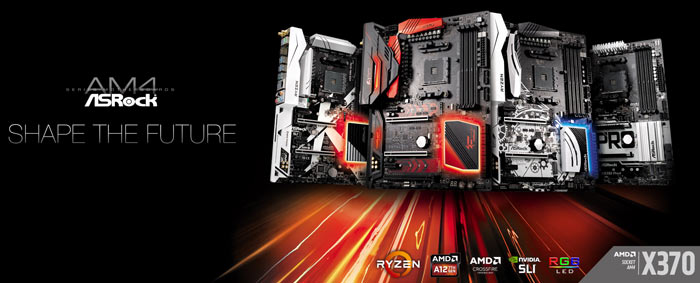
Aimed at gamers the three Fatal1ty motherboards share the same red LED design cues. ASRock has produced the flagship Fatal1ty X370 Professional Gaming board, the APU supporting Fatal1ty X370 Gaming K4, and the Fatal1ty AB350 Gaming K4 with B350 chipset, APU support, and single graphics card support. All are ATX form factor.
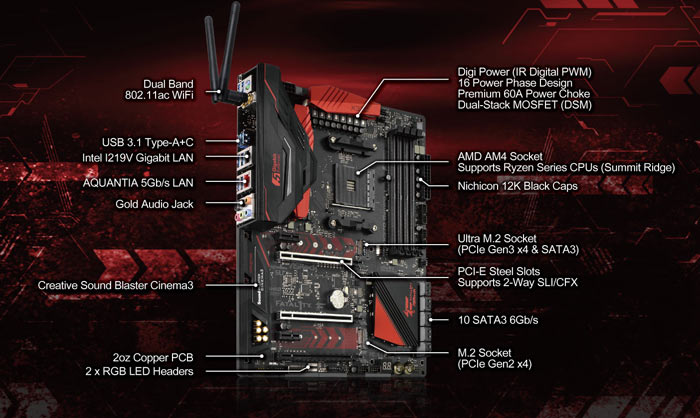
Concentrating on that top Fatal1ty board (in diagram above) for a while, it boasts impressive expandability and enthusiast level features such as:
- Support for Nvidia Quad SLI, AMD Quad CrossFireX
- 2 PCIe 3.0 x16, 1 PCIe 2.0 x16, 2 PCIe 2.0 x1, 1 M.2 (Key E)
- 10 SATA3, 1 Ultra M.2 (PCIe Gen3 x4 & SATA3), 1 M.2 (PCIe Gen2 x4)
- 2 USB 3.1 (1 Type-A, 1 Type-C), 10 USB 3.0 (4 Front, 6 Rear)
- Aquantia 5 Gigabit LAN, Intel Gigabit LAN
- Intel 802.11ac+ BT 4.2
- Creative SoundBlaster Cinema3 supporting Realtek ALC1220 7.1 Audio
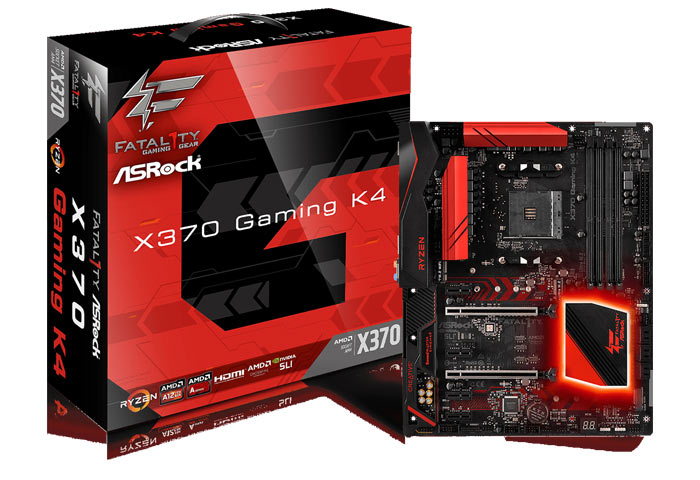
The second rung Fatal1ty K4, pictured above, still supports quad-GPU setups but fewer SATA3 ports, just standard Intel Gigabit LAN, and a few other reductions from the flagship specs.
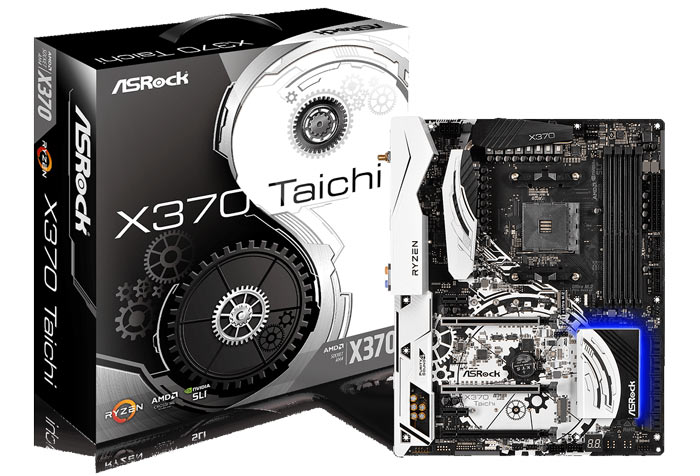
For all-round performance ASRock recommends its X370 Taichi. Said to be attractively priced this board again eschews APU support but you can fit quad-GPUs to cure that ailment. Overclockers might find this board appealing with its "optimum IR 16 power phase design". Furthermore, its Hyper BCLK Engine II external clock chip (for BCLK overclocking) provides a wider range of frequencies and more precise clock waveforms for precise and stable overclocking. No APU support here.
Another option for those looking for a fully featured X370 board is the X370 Killer SLI. ASRock says this motherboard offers a great combination of features and price. Included amongst its talents are; SLI and CrossFireX support, on board 802.11ac Wi-Fi, reversible Type-C USB, dual M.2 modules for ultra-fast SSD storage performance at up to 32Gb/s, and IR digital PWM 12 phase power supply design. The X370 Killer SLI supports AMD APUs.
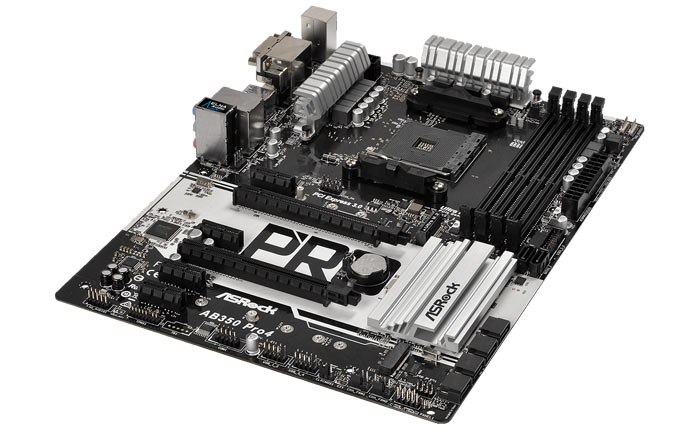
Lastly there is the ASRock AB350 Pro4, pictured above. As you might guess this is based upon the B350 chipset. You can equip either a Ryzen CPU or AMD APU. This is still an ATX board so there's lots of expansion room including 2 PCIe 3.0 x16, 4 PCIe 2.0 x1, 6 SATA3, 1 Ultra M.2 (PCIe Gen3 x4), 1 M.2 (SATA3), and 8 USB 3.0 (1 Type-C, 2 Front, 5 Rear). You can read through the full specs on the product page.













